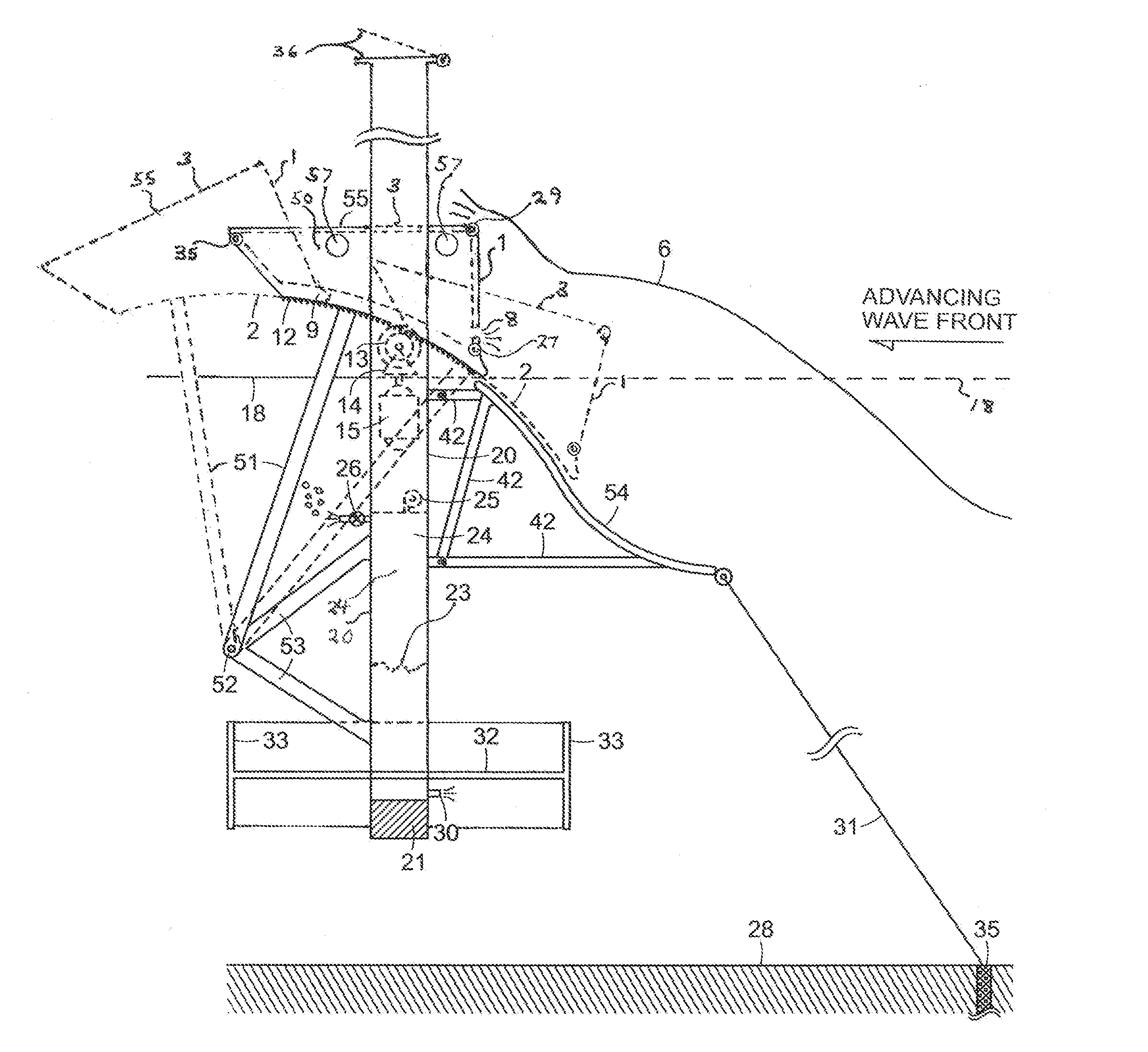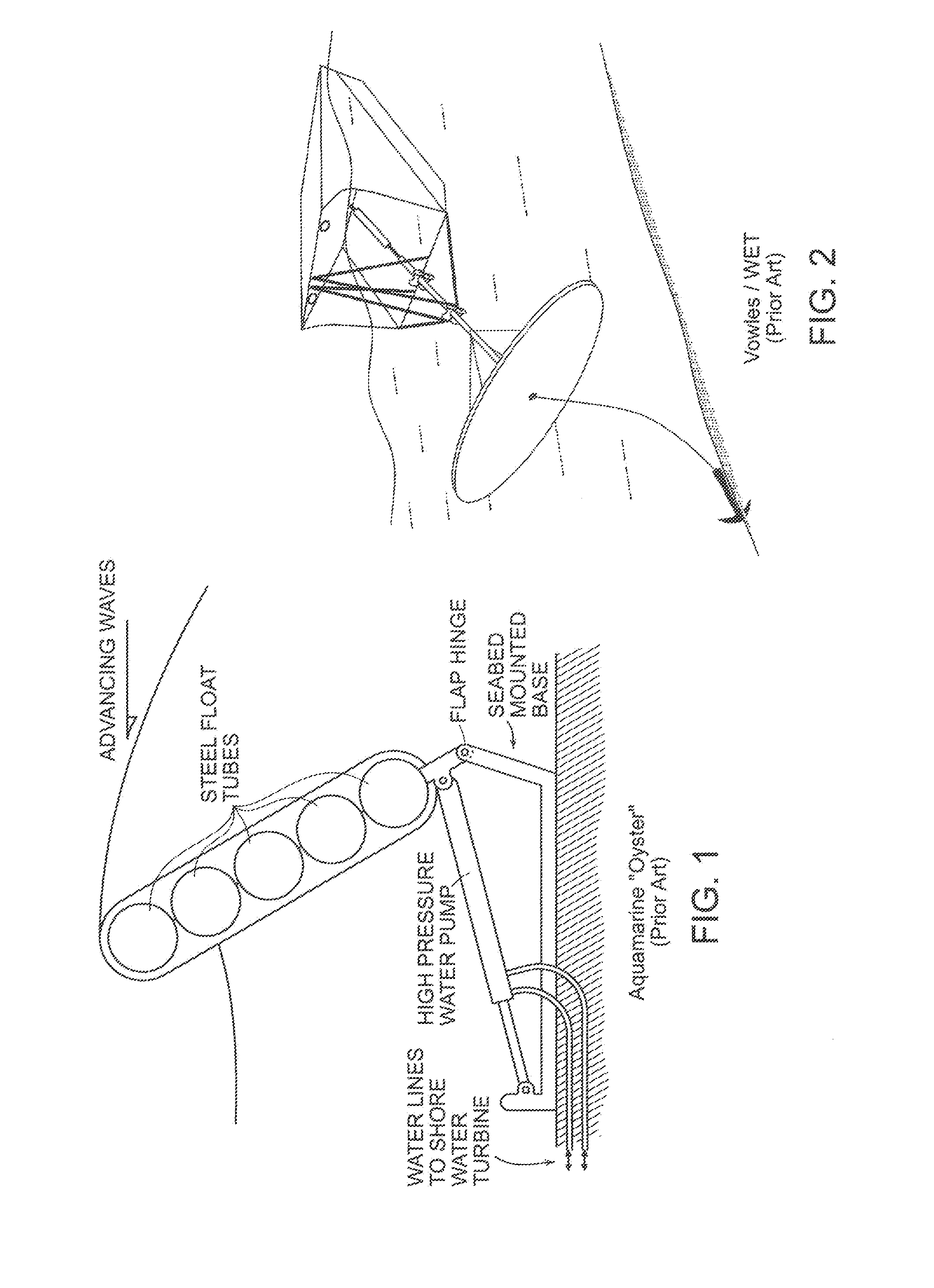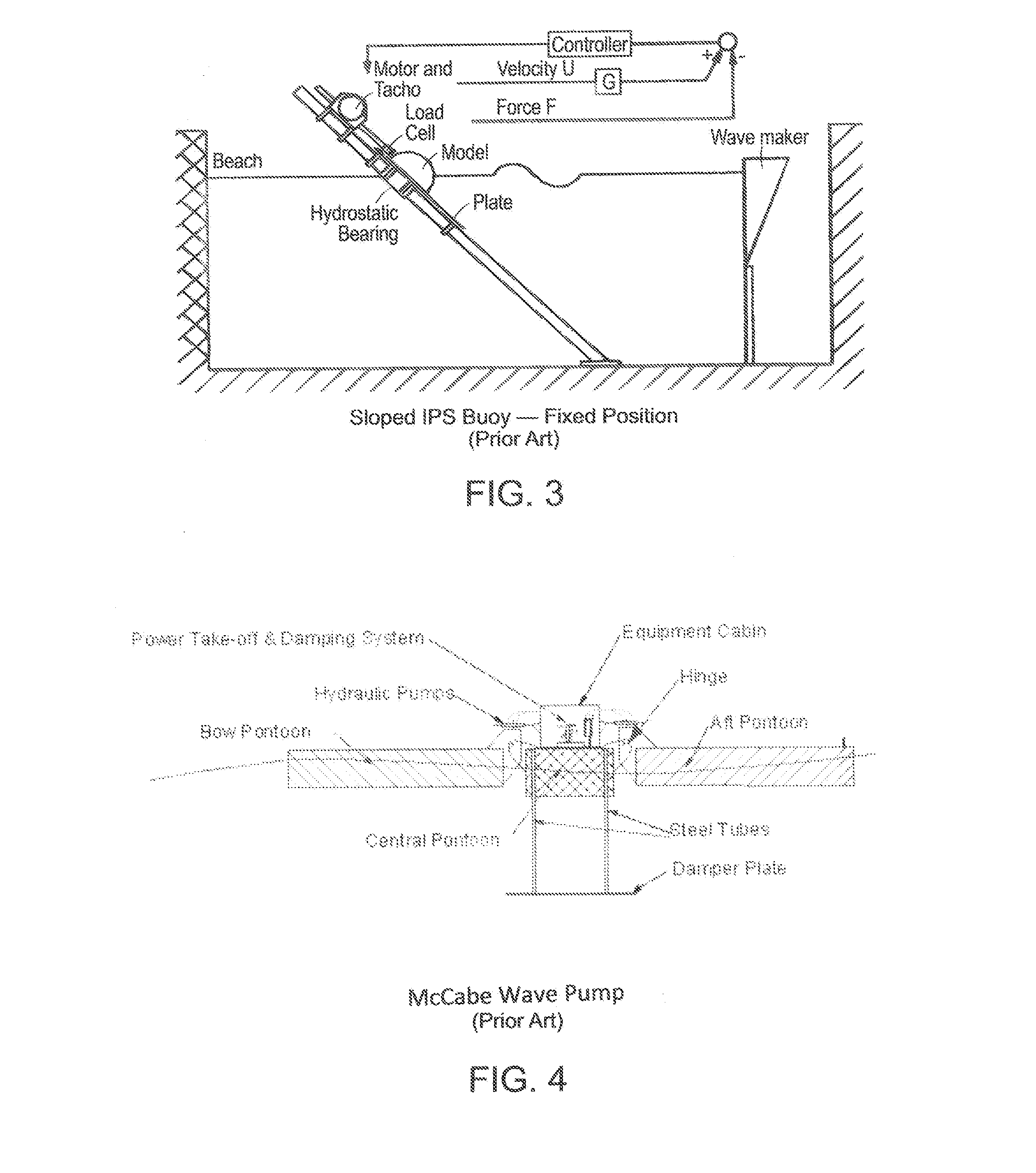Multi-Capture Mode Wave Energy Converter With Submergible Float
- Summary
- Abstract
- Description
- Claims
- Application Information
AI Technical Summary
Benefits of technology
Problems solved by technology
Method used
Image
Examples
Embodiment Construction
[0045]The features and limitations of the Related Art WECs of FIG. 1 through FIG. 4, inclusive, are previously described and discussed in the previous Distinguishing Features over the Prior Art section.
[0046]Referring to FIG. 5, an embodiment of the disclosure is shown wherein one or more relatively lightweight floating elongated buoyant float(s) or barrier(s) having a wave front facing and impacting forward face 1 which may be buoyant or non-buoyant, concave, convex, flat (as shown) and sloping upwardly, or generally vertical and outwardly and being a rigid (shown) or a hinged panel (shown) or a flexible wave impacting front wall (not shown), with the float having a relatively flat and upward and rearward sloped bottom wall 2. A cavity in the float(s) 4 created by the forward wall 1 and a bottom wall 3 can have an open upward facing cavity (not shown), be solid, or hollow (not shown), or have a top cover plate 55. This top or “splash cover”55, prevents excessive seawater 6 from imp...
PUM
 Login to View More
Login to View More Abstract
Description
Claims
Application Information
 Login to View More
Login to View More - R&D
- Intellectual Property
- Life Sciences
- Materials
- Tech Scout
- Unparalleled Data Quality
- Higher Quality Content
- 60% Fewer Hallucinations
Browse by: Latest US Patents, China's latest patents, Technical Efficacy Thesaurus, Application Domain, Technology Topic, Popular Technical Reports.
© 2025 PatSnap. All rights reserved.Legal|Privacy policy|Modern Slavery Act Transparency Statement|Sitemap|About US| Contact US: help@patsnap.com



